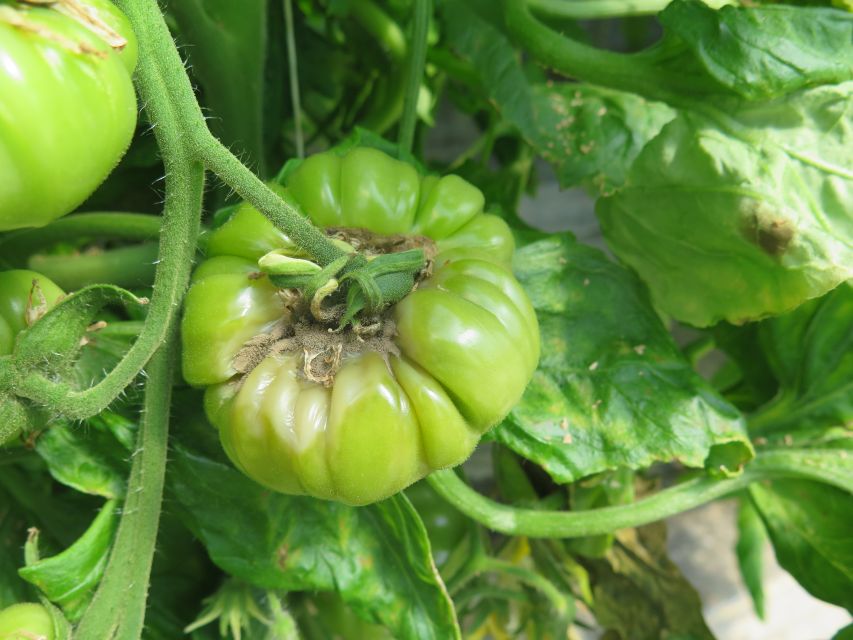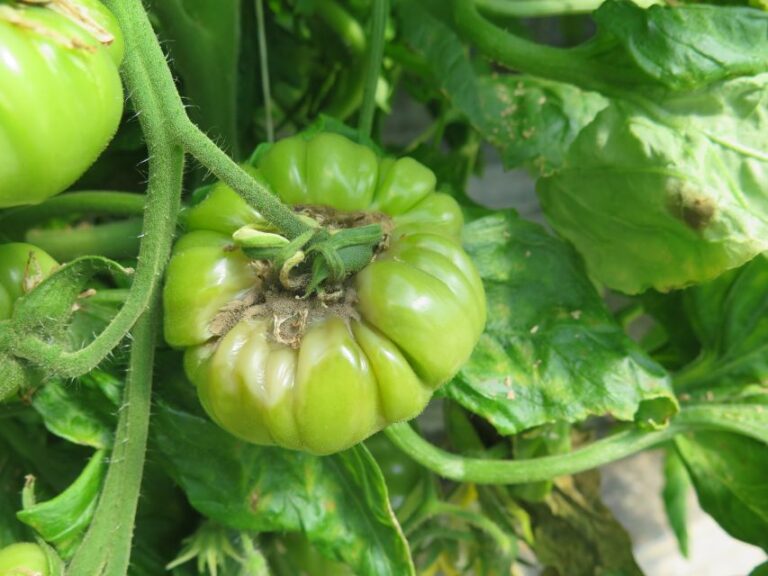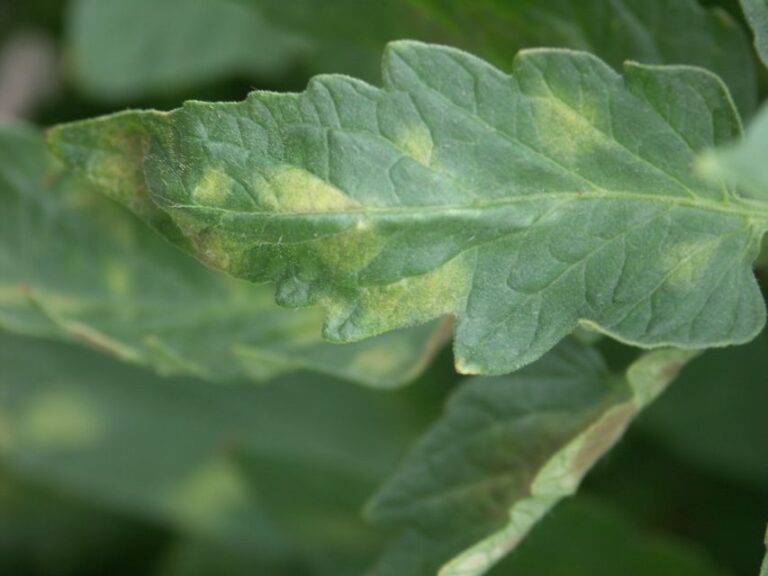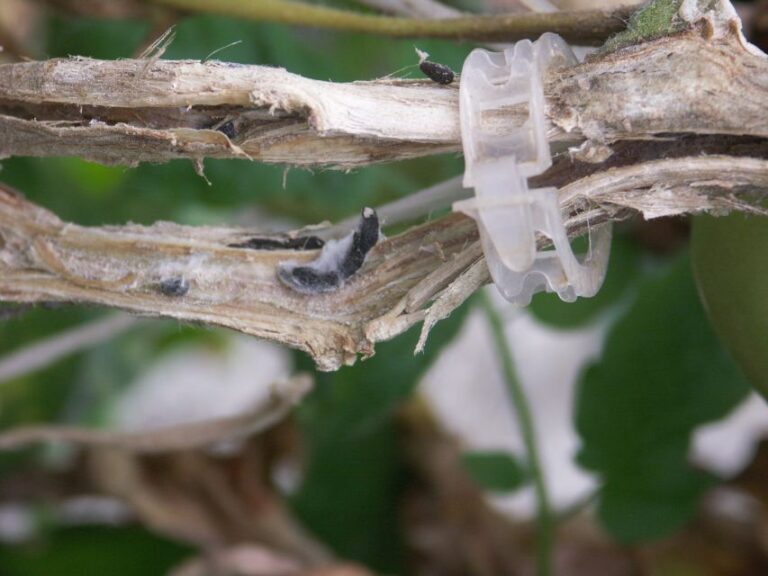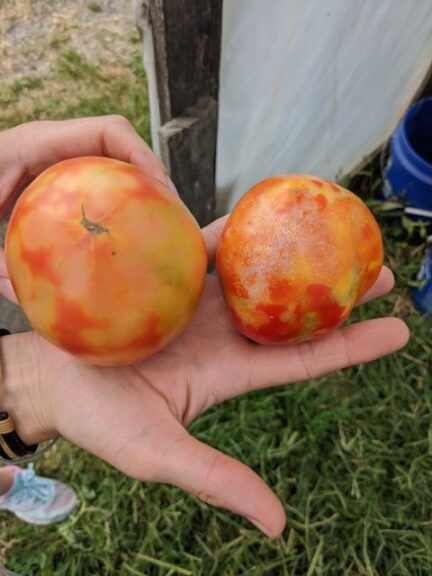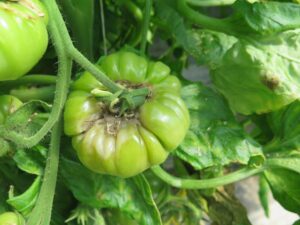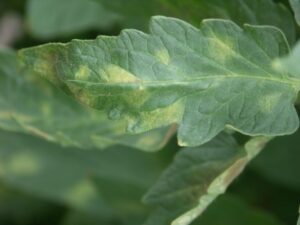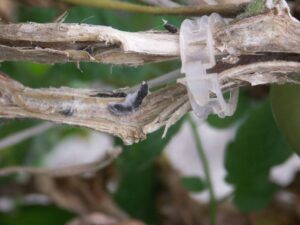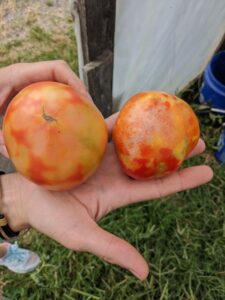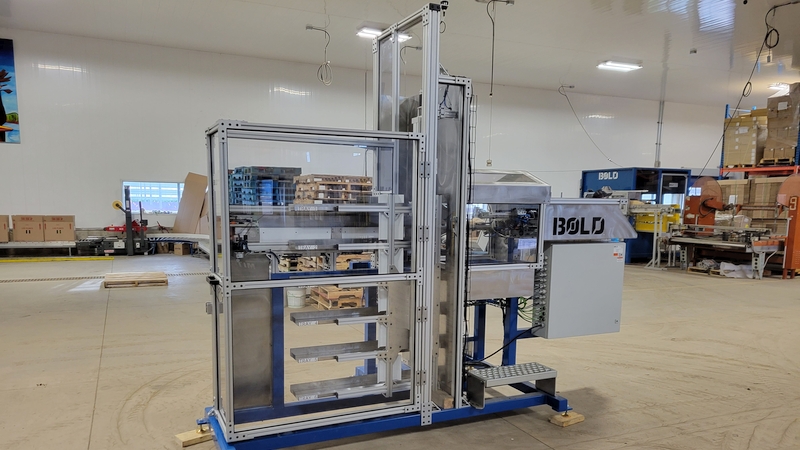A Refresher on Diseases to Monitor in Greenhouse Tomatoes
Editor’s Note: This was the first of a two-part series on greenhouse tomato diseases. The first part focuses on the most common diseases. Part two, found here, offers management strategies.
Most foliar vegetable diseases require leaves to be wet in order for infection to occur; rain is often necessary for disease spread. Since greenhouse structures control rainfall on plants, these structures reduce leaf wetness. For this reason, diseases common in field tomatoes such as Septoria leaf blight and bacterial spot are less common in a greenhouse than they are in a field.
However, greenhouse tomatoes are not free from disease; they have their own set of problems. Greenhouse tomatoes often experience conditions of high relative humidity compared to field-grown tomatoes due to the enclosed nature of the structure. Under high relative humidity, the diseases discussed below are more likely to occur. In addition, greenhouse tomatoes grown in-ground to maturity are often not rotated with another crop, which increases disease pressure. Tomatoes grown in containers to maturity do not have the same crop rotation requirements. Tomatoes grown in a greenhouse for transplant production are exposed to greenhouse conditions for only a few weeks.
Four of the most common tomato diseases in the greenhouse are discussed below; however, this list is not exhaustive. Many more diseases may occur in tomato production in greenhouses.
Gray Mold (Botrytis cinerea)
Gray mold affects many vegetable and ornamental crops. Vegetable hosts include tomato, lettuce, pepper, and snap bean. If left uncontrolled, gray mold can cause severe symptoms on leaves, stems, and fruit. Gray mold lesions often start as small, water-soaked areas on leaves. Under dry conditions, the lesions turn a light brown. Lesions often are wedge-shaped with the wide edge on the leaf margin. One can easily observe the growth of the causal fungus with a 10x hand lens. Gray mold may also cause lesions on stems and fruit.
Since gray mold often infects injured tissue, growers should avoid practices that wound plants. Temperatures above 75ºF decrease disease severity. Any practice that lowers relative humidity tends to lower the severity of gray mold and many other diseases. The addition of lime to soils to increase the calcium content of tomato plants may help to reduce the susceptibility to gray mold. The fungus that causes gray mold may survive season-to-season in crop residue.
Leaf Mold (Passalora fulva)
Although leaf mold produces quite noticeable leaf symptoms, the disease is usually not serious, depending on how far along into the season the disease occurs. Leaf mold causes bright yellow, blotchy lesions on the top of tomato leaves. On the undersides of leaves, the fungus that causes leaf mold can clearly be seen as an olive-green fuzz. Under severe conditions, the fungus can be seen growing on the top of the leaf as well. Lesions do not appear on stems or fruit. The spores are easily airborne, which spreads the disease throughout the greenhouse. Spore germination is favored by high humidity.
The optimum temperatures for leaf mold are between 72ºF and 75ºF. An excellent management strategy is to use tomato varieties that have resistance to leaf mold. However, some resistant varieties are not listed as such and variability in the fungus population may overcome the tomato plant’s resistance. Other management options include taking measures to reduce humidity, increase airflow, and improve sanitation. The fungus that causes leaf mold may survive season-to-season in crop residue.
White Mold (Sclerotinia sclerotiorum)
White mold can kill plants, so this disease can be a serious problem in greenhouses. The first symptom is often the wilting of scattered tomato plants. Upon closer inspection, the lower stem of an affected plant may have a light brown lesion that girdles the plant, causing it to wilt and possibly die. The lesions appear woody, which is how this disease got its alternate name: timber rot. The lesions are often accompanied by the white growth of the causal fungus as well as dark, irregularly shaped fungal structures (sclerotia).
Sclerotia are found on the outside or inside of the stem and allow the fungus to overwinter several years in the soil without a host. White mold may also cause a rot of tomato fruit. In spring, sclerotia germinate to form miniature, mushroom-like fruiting structures, several of which could fit on a dime. Spores from these structures can infect a wide host range of plants. Since sclerotia germinate into mushrooms in the spring, symptoms of white mold on tomato plants often occur in the spring or early summer.
White mold does not spread from plant to plant except when an infected plant directly contacts an unaffected plant. Cool temperatures (59ºF to 70ºF), high humidity, and moist conditions are all favorable for the disease. Crop rotations of continuous tomato also seem to favor the disease; however, the causal fungus has a large host range, so crop rotation with other vegetables may be insufficient to control the disease. The fungus that causes white mold survives year-to-year as dark sclerotia that may be found on or in the stem.
Tomato spotted wilt virus (TSWV) is a plant disease caused by a virus that infects more than 1,000 species of plants, including ornamentals and vegetables. Impatiens Necrotic Spot Virus (INSV) is a taxonomically similar virus with similar symptoms and biology. Visual symptoms of TSWV vary depending on many factors, but general characteristics include yellow or brown ringspots on fruit and small, dark-colored ringspots on foliage that may make the entire leaf appear bronzed in severe cases. The virus is moved (vectored) from plant to plant by the piercing-sucking feeding of tiny insects called thrips. So, managing this disease requires strong and continued efforts to: (1) manage the source of the virus (other plants that are already infected), and (2) manage thrips, which move the virus from infected plants to healthy plants. If possible, choose tomato varieties that are resistant to TSWV. The presence of thrips may be favored by the protection from rain that greenhouses provide.
The most important factor in avoiding TSWV in your greenhouse is to avoid purchasing vegetable starts that are produced in the same greenhouse as ornamentals. Do not raise flowers and tomatoes together either as transplants or mature plants. Ornamentals such as flowers that are purchased as plugs may harbor thrips that may vector the virus. If flowers are grown in a separate greenhouse facility, avoid moving personnel or equipment from flower to tomato greenhouse. Seed transmission is not considered important in the spread of this disease.
Other Occasional Tomato Diseases
- Bacterial canker is not frequent in greenhouses. However, the disease can start on greenhouse-produced transplants which are overhead irrigated. Once in a greenhouse, this systemic disease can continue to show symptoms, although plant-to-plant spread is unlikely.
- Early blight is another disease that isn’t usually a problem in greenhouses. However, when mature plants are grown too close together, leaf wetness and high humidity can allow this disease to get a foot hold.
- Powdery mildew is favored by high relative humidity such as is found in a greenhouse. However, powdery mildew is usually not an important factor in the relatively short period during which determinant tomatoes are grown for season extension.
- Tomato pith necrosis is more often found in the greenhouse than in the field, perhaps because the disease is favored by high humidity. This disease may be severe on individual plants, but occurs only infrequently.





